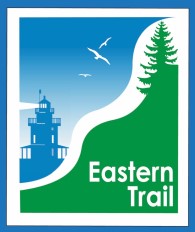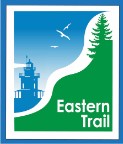[Eds. note: This article includes information about legislation currently being considered, LD 2124 – “An Act To Create the Rail Corridor Use Advisory Council Process,” which would ensure that unused Maine rail corridors don’t stay stagnant indefinitely. Sue Ellen Bordwell of Yarmouth is president of the Casco Bay Trail Alliance. Dick Woodbury, also of Yarmouth, served 10 years in the Maine Legislature and is on the board of the East Coast Greenway Alliance.
A related article is here. An advocacy page on LD 2124 can be found here]
By SUE ELLEN BORDWELL AND DICK WOODBURY, published March 12, 2020
We are tangibly close to having a continuous off-road greenway that connects the communities from Kennebunk to Portland, Westbrook, Lewiston-Auburn, Brunswick and Augusta. Situated along many of the major commuting corridors in southern Maine, this regional trail network would be among the most frequently used in America, promoting health and fitness, reduced greenhouse-gas emissions, tourism, economic development and enhanced community life.
Critical to achieving this vision is the repurposing of four state-owned rail corridors in our region, much like the repurposing of a rail corridor purchased by the state of New Hampshire for their greenway path from Portsmouth to the Massachusetts border. In Maine, three of these corridors are already state-owned, unused by trains and largely redundant with separate and active rail corridors that can be cost-effectively maintained for current and future train passage.
• Project 1, the Casco Bay Trail, uses the former St. Lawrence & Atlantic corridor from Portland to Yarmouth. Importantly, an active rail line used by the Amtrak Downeaster already provides train passage from Portland through Yarmouth on its way to Freeport and Brunswick. The St. Lawrence & Atlantic is a totally separate corridor on essentially the same route. This is a case where no rail-versus-trail controversy seems necessary. We can have both: a well-maintained track for active rail use and one of the most popular greenway trails imaginable.
To the south, the Casco Bay Trail would connect to the Portland Trails network, including Back Cove, the Eastern Promenade trail and 22 off-road miles of the Eastern Trail from South Portland to Kennebunk. To the north, it would connect to the Beth Condon Pathway, running from Yarmouth to the Freeport YMCA, and the West Side Trail, running from western Yarmouth to the far end of Cousins Island. L.L. Bean and the town of Freeport are also collaborating on a trail extension from the YMCA to downtown.
Constructing the Casco Bay Trail in no way inhibits passenger train service from Portland to Lewiston-Auburn. The Amtrak Downeaster could easily fork from its existing corridor with one track going to Freeport-Brunswick and the other to Lewiston-Auburn. Indeed, an exciting vision is taking shape with Amtrak stops at turnpike Exit 53 in West Falmouth and Pineland and turnpike Exit 72 in Auburn and downtown Lewiston-Auburn. The Casco Bay Trail is complementary with this vision.
• Project 2, the Merrymeeting Trail, repurposes an unused rail corridor from Brunswick and Topsham to Gardiner. It connects the Kennebec River Rail Trail to the north with the Androscoggin River Bicycle and Pedestrian path to the south, advancing a 40-mile “Capital to Coast” trail system. For commuting purposes, it serves residential communities surrounding Augusta, Brunswick, Topsham and eventually Bath. It would be a spectacular greenway through villages, forests and fields and along rivers.
Read the entire article online here.











